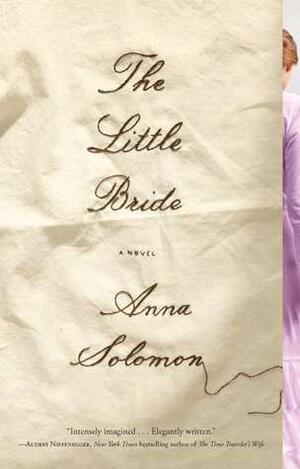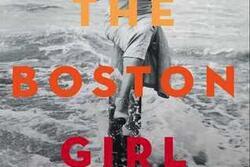Book Review: The Little Bride
Through evocative rendering of a little-known chapter in Jewish-American history, Anna Solomon’s novel The Little Bride takes us from Eastern Europe to the American West in the story of Minna, a 19th-century mail-order bride. The novel opens as 16-year-old Minna undergoes an intrusive physical exam in Odessa to determine her fitness to be sent to America and become a wife to a stranger. The ordeal quickly establishes Solomon’s immediate storytelling and descriptive prowess: “The woman’s breath was close, and sharp, like seawater crossed with wine. Minna fended off her desire to pull away. She would never, she told herself, have to smell this smell again. She would live across oceans, she would have a husband, she would have her own house. … Her eyes startled open when the fish hands cupped her breasts and lifted. At her stomach she felt a tickle: the man’s beard. He drew so close he might have been sniffing her.”
Upon leaving Odessa, Minna undertakes an ocean voyage that is one of the most gripping descriptions of travel by sea that I have ever read. Solomon’s prose thrusts the reader into the claustrophobic steerage section and forces her/him to feel the seasickness, smell the stench, see the bodies, and feel skin crawl with disease. “By the second day, the floor was slick with vomit. … Each time the boat tilted, the sick passengers groaned with the engine. By the fourth morning, they’d started to cry. They muttered unintelligibly, or in foreign languages. The air was too warm—it smelled of rye and urine. A baby died. From light to dark to light, the hold was the same, a vibrating, steamy swamp.”
Once the ship finally reaches America, Solomon builds suspense as Minna travels by train across the strange new land. The character studies a tiny, blurry photo and anxiously anticipates meeting her soon-to-be husband, Max, as the train brings her nearer to him and her new life. Solomon is at her narrative best as she describes her character staring out the window and experiencing this new land for the first time. The dry expanse Minna sees (“Everything looked dusty but new, as if the whole country was a woodshop”) foretells the parched, grimy existence she will soon lead.
The reader is aware that they’ve reached the heart of the story when Minna arrives at her destination. Here we meet the supporting cast of characters: the husband she has been imagining and the two sons she didn’t know he had; assorted neighbors; and the unending prairie. As the story settles into Minna’s daily challenges—the dark claustrophobia of a sod house, a brutal, starving winter, and the pretense of caring for her kind but pitiful husband—Solomon effectively communicates this life as nasty, brutish, and short. If the scenes of frontier life are at times reminiscent of other literature-on-the-prairie, Solomon is especially effective in juxtaposing that life with Old-World Jewish custom. How could Jews manage to keep their customs alive in the face of a harsh, unpredictable landscape that didn’t bend to the weekly rhythms of Jewish life? And how could Jewish women find the balance between ritual adherence and practical survival for their families?
The reader experiences Minna’s growing disillusionment with her new life as authentic and devastating. But where The Little Bride falls short, in my mind, is in the novel’s attempt to build romantic suspense and offer a feminist lesson. As her husband is portrayed stubbornly clinging to Orthodox practice—and Minna is increasingly dismayed, even outraged by Max’s inability to adapt to the exigencies of the new world—the sexual tension builds between Minna and her stepson, Samuel. Their simmering attraction is rather inexplicable, as Samuel exhibits nothing but surly, rude behavior toward Minna. When they at last consummate their passion, there is no relief or joy: Minna experiences it as rough, painful, and unloving. Her choice between an arranged marriage and a love affair is no choice at all, Solomon seems to say; her only real choice is to rely on herself.
And yet, The Little Bride’s “feminist” ending feels like a tacked-on coda rather than a likely finale: Minna leaves Max, Samuel, and the frontier, building an independent life of her own in a city and never marrying again. Solomon intends us to see her as an early prototype of a modern woman, but to my mind, this final development doesn’t ring true. Minna hasn’t shown enough seeds of feminist awakening before this point; if forgoing marriage and a traditional domestic life is “character development,” then it reads more like resignation on Minna’s part than revelation or personal evolution. But in The Little Bride’s well-researched, intimately-told story of Eastern-European mail-order brides and Jewish life on the frontier, Anna Solomon succeeds in vividly rendering a historical time and place, and offering an unknown facet of both American prairie life and Jewish immigration.







